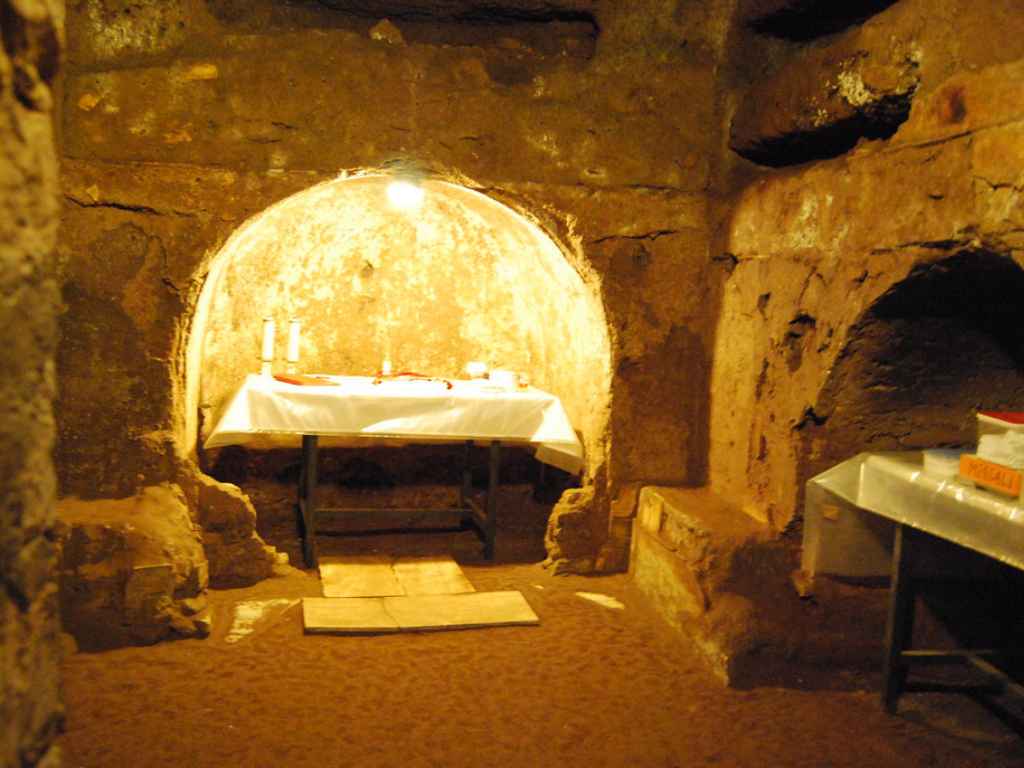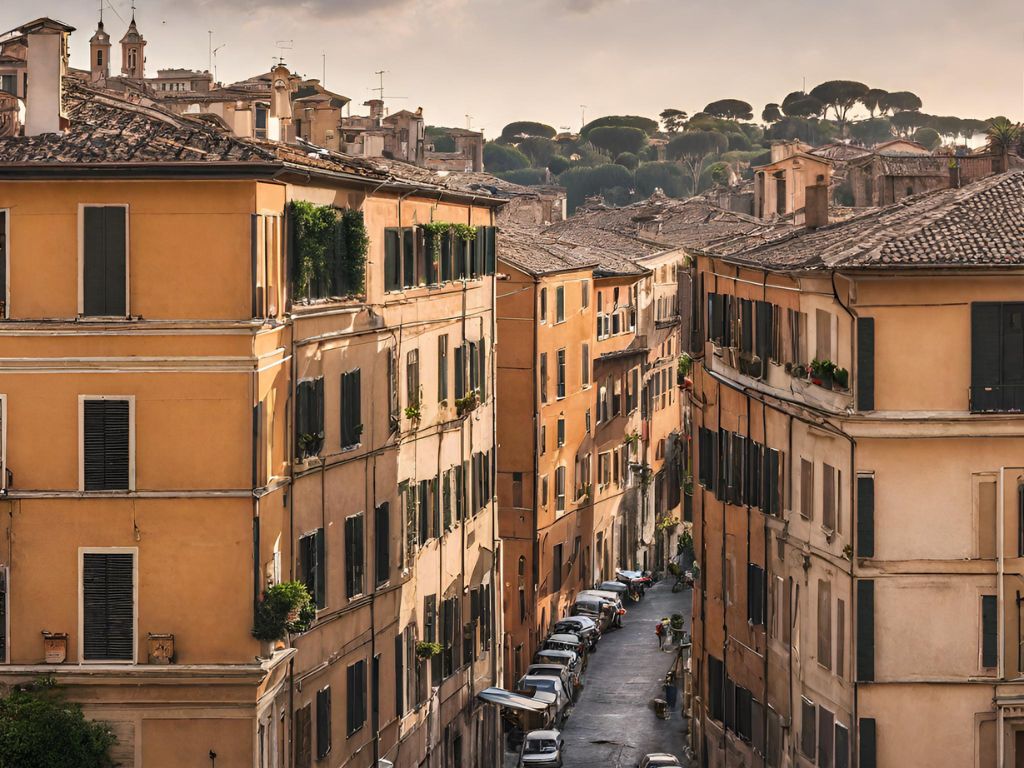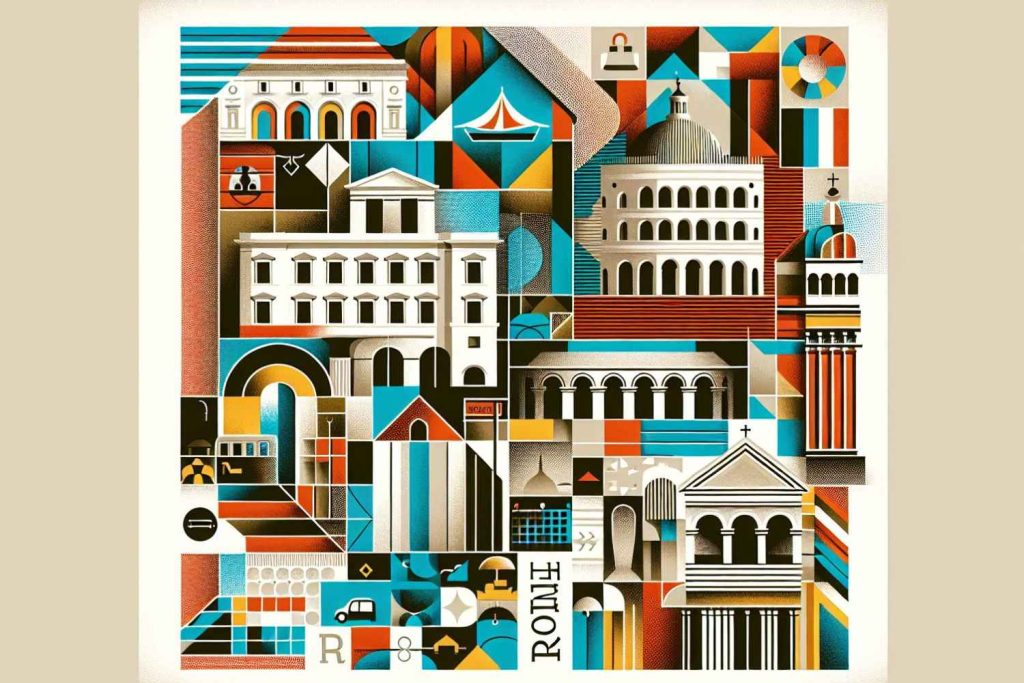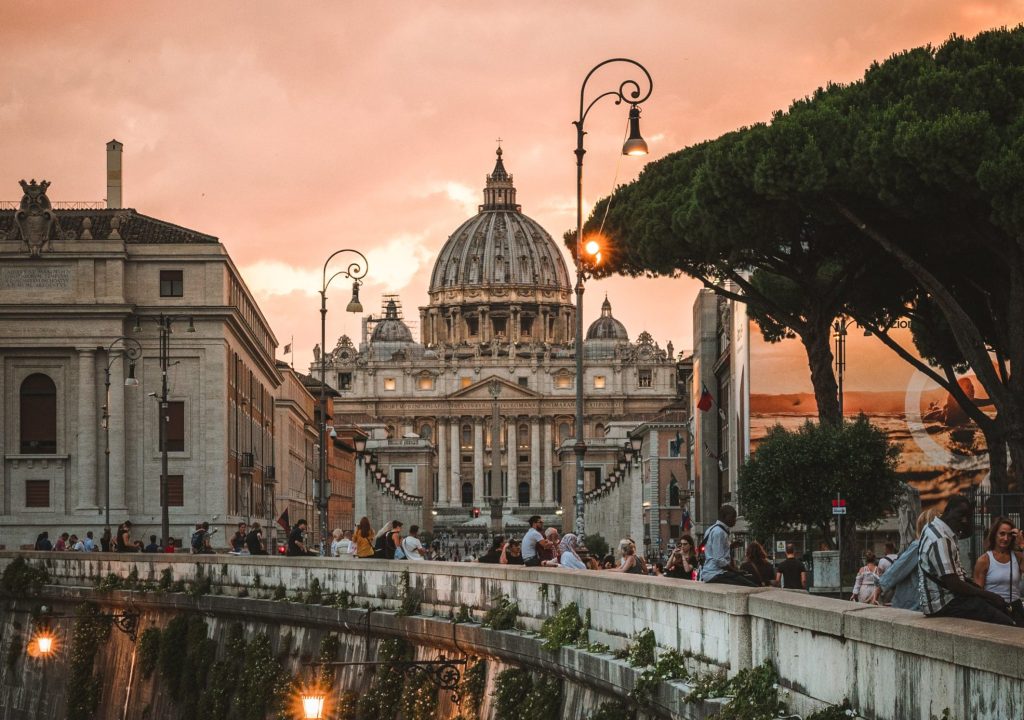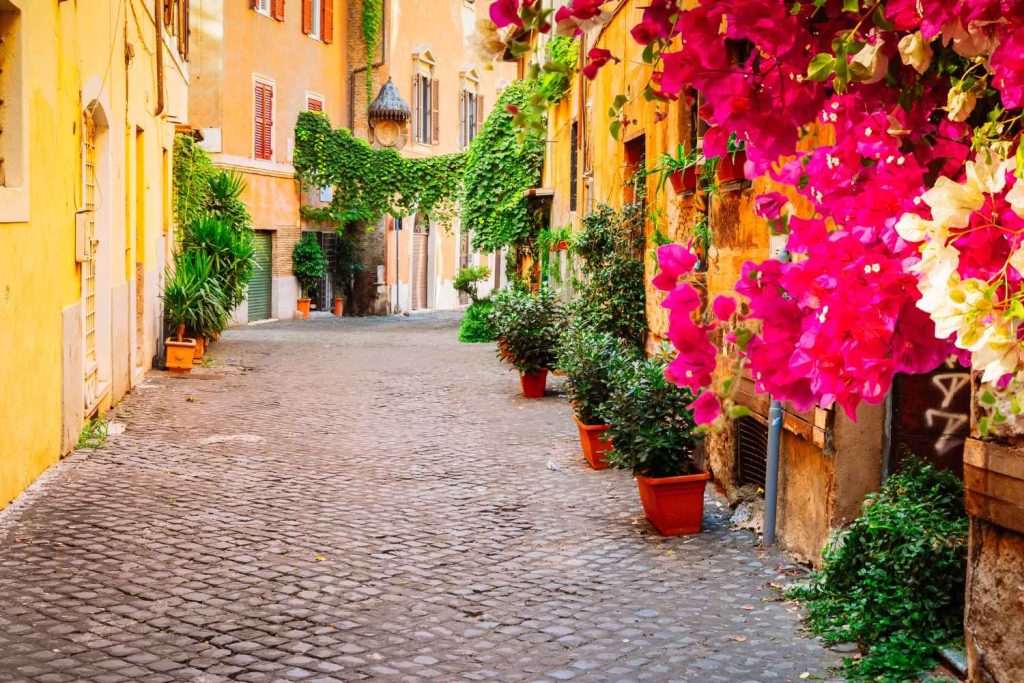Beneath the bustling city of Rome lies a hidden world of ancient burial sites, known as the Roman Catacombs.
These subterranean chambers offer a fascinating glimpse into the lives and beliefs of early Christians, pagans, and Jews. The catacombs were not just places of burial, but also architectural wonders with intricate tunnels and chambers that have captivated the curiosity of historians and tourists alike for centuries.
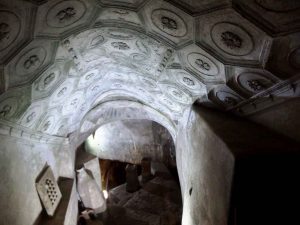
The Roman Catacombs were constructed outside the city walls along major Roman roads such as the Via Appia, Via Ostiense, Via Labicana, Via Tiburtina, and Via Nomentana. There are nearly sixty known Roman catacombs in Rome, each with its unique story and significance. The exploration of these underground chambers sheds light on various religious practices, artistic expressions, and cultural heritage from the ancient world.
Visitors to Rome can tour select Roman catacombs, such as those on the Appia Antica or the Roman Catacombs of Priscilla, to experience firsthand this extraordinary part of Rome’s history. As they venture into the depths of these ancient burial sites, they will encounter remarkable examples of early Christian art and learn about the people who sought eternal rest in these sacred spaces. The Roman Catacombs serve as an unparalleled reminder of an essential period in history and the beliefs that shaped it.
The Importance of Roman Catacombs
A Hidden History
Roman catacombs are a fascinating piece of subterranean history dating back to ancient Rome. These underground burial sites are an important testament to the city’s past that allows scholars to better understand the historical and religious context of the time. The Roman catacombs were originally built by aristocratic families and were eventually used as a burial site for pagans and Christians alike, including significant figures like the Emperor Balbinus in the 2nd century.
The intricate network of tunnels beneath Rome, also referred to as “Roma Sotterranea,” is an impressive feat in terms of engineering and design. Some Roman catacombs date back to the 1st century, making them among the first ever built. These tunnels consist of various chambers and burial niches carved out of limestone and sandstone by the Etruscan people for mining purposes before being repurposed as catacombs.
Religious Significance
Beyond their historical value, the Roman catacombs also hold immense religious significance, primarily in the context of early Christianity. They provide a unique glimpse into the spiritual life of early Christians as they navigated Roman society. The Roman catacombs became a place for Christian burials and ceremonies, displaying a fascinating intertwining of faith, death, and the art of burial.
For Christians in ancient Rome, the catacombs were more than just a burial site. They symbolized their resurrection in Christ and served as a sanctuary for religious practices. Many of the Roman catacombs feature stunning artwork and inscriptions that convey Christian beliefs and shed light on the religious tensions of the time.
Given their importance to the historical and religious narrative of Rome, the catacombs continue to captivate and inspire those who explore this hidden, underground world. As a testament to Rome’s religious history and a crucial source of information about ancient Rome’s society and spirituality, the catacombs hold an undeniably important place in the study of early Christian life and the world beneath the streets of Rome.
Architectural Details and Artistic Representations
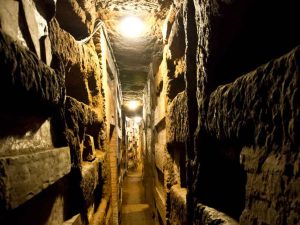
Roman Catacombs’ Craftsmanship and Materials
The Roman Catacombs are an intricate network of underground tombs and crypts, showcasing remarkable craftsmanship and the use of various materials. One of the primary materials used in constructing the catacombs is tufa, a soft volcanic stone abundant in the region. Known for its durability and ease of carving, tufa allowed for creating intricate designs and artistic embellishments.
Along with tufa, other materials like marble were also used in the construction of tombs and sculptures. These materials not only provided structural stability but also added an aesthetic appeal to the catacombs. The combination of craftsmanship and materials reflect the artistry of Roman culture, as well as the significance of the burial process.
Frescos and Sculptures of Roman Catacombs
Within the Roman Catacombs, visitors can find numerous examples of artistic representations, such as frescos and sculptures. The walls of the underground chambers are adorned with frescos, a popular art form in ancient Rome. These frescos often depict scenes from the Old and New Testament, reflecting the emergence of Christian art during this period. The use of bright colors and intricate details in these frescos captivate viewers and provide insight into the spiritual beliefs of those who were buried in the catacombs.
Similarly, sculptures are also a significant part of the catacombs’ artistic heritage. Carved from materials such as marble, these sculptures often portray religious figures, and occasionally display scenes from mythology. The presence of sculptures and frescos within the catacombs underscores the importance of artistic representation in Roman society and serves as a testament to the craftsmanship and creativity of the artisans who worked on these subterranean burial sites.
Life and Death in the Roman Catacombs
Burial Traditions
The Roman catacombs provide a vivid picture of ancient burial traditions. These subterranean cemeteries, mainly used by Christians and Jews, were created to accommodate the increasing need for burial spaces outside the city walls. They were carved into the volcanic tufa beneath the city itself. Early Christian burials often involved burying the deceased in simple loculi, horizontal niches cut into the walls, while more elaborate tombs were reserved for martyrs.
Beneath the surface, miles of passageways were adorned with art and sculptures. Christians had a preference for frescoes depicting biblical scenes, while Jews favored geometric designs and images from nature. Despite the differences in decorative tastes, both groups shared the practice of using the catacombs as burial grounds.
Memorial Inscriptions
Inscriptions played an essential role in Roman burial customs. They often included the name, age, and date of death of the deceased. Among Christians, these engravings frequently contained symbolic representations of their faith, such as the fish or the anchor. Meanwhile, Jewish inscriptions often featured images like the menorah, symbolizing their cultural identity.
These memorial inscriptions serve as valuable historical records, shedding light on social aspects such as family relationships, occupations, and even expressions of grief. Through the study of these inscriptions, we can gain a deeper understanding of the lives and beliefs of the early Christians and Hebrews who once walked the streets of Rome.
Exploration and Rediscovery of the Catacombs
Lost and Found
The Roman Catacombs, consisting of miles of subterranean passages, were originally used as burial places and hideouts beneath the streets of ancient Rome. Over time, these catacombs were gradually forgotten, and it was not until May 31, 1578, that they were accidentally rediscovered by laborers digging for pozzolana earth.
Renowned ecclesiastical historian Antonio Bosio was among the first to explore these mysterious catacombs. His extensive studies resulted in a better understanding of these underground labyrinths and their historical significance. Some of the most famous catacombs include the Catacombs of Domitilla, San Callisto, and the Catacombs of Priscilla.
Archaeological investigations have played a crucial role in revealing the importance of these catacombs, which were not only used for burials but also as pilgrimage destinations in the past. Precious artifacts and intricate frescoes found in the catacombs provide valuable insights into the daily lives and beliefs of the people who once inhabited them.
Contemporary Visits and Tours
Today, numerous catacombs in Rome are open to the public for educational visits and guided tours. Some of the most popular include the Vatican Catacombs, where visitors can explore the intricate galleries and chambers, and the Catacombs of Domitilla, known for their beautiful frescoes and well-preserved architecture.
Another notable example is the Catacombs of San Callisto, which serve as the final resting place of several early popes and Christian martyrs. The Catacombs of Priscilla, on the other hand, boast a rich collection of early Christian art, providing visitors with a unique opportunity to delve into ancient Rome’s artistic heritage.
In conclusion, the rediscovery of the Roman Catacombs has proven invaluable for both archaeology and cultural heritage. As contemporary visitors embark on guided tours through these underground labyrinths, they can immerse themselves in the rich history and breathtaking artistry that lies hidden beneath the surface of Rome.
Notable Catacombs and Their Significance
Catacombs of San Callisto
The Catacombs of San Callisto are among the largest and most important Christian catacombs in Rome. Located on the Appian Way, they have a long history that dates back to the 2nd century AD. The catacombs are named after Saint Callixtus, who served as a deacon and was entrusted by Pope Zephyrinus with the administration of the cemetery. Several early Christian martyrs and popes were buried here, making the site an essential religious attraction.
The San Callisto catacombs served as a burial site for a diverse range of Christians from different social classes. A notable feature within these catacombs is the Crypt of the Popes, which holds the tombs of nine popes and several other important historical figures from the early Christian period. The intricate frescoes found in the various chambers also provide a rich insight into early Christian iconography.
Catacombs of Priscilla
The Catacombs of Priscilla, located on Via Salaria, are among the oldest and most significant Christian catacombs in Rome. They are named after the noblewoman Priscilla, who generously donated the land for the catacombs. These catacombs hold a vast number of tombs, including those of various early Christian martyrs.
One of the most unique aspects of the Catacombs of Priscilla is the Cubiculum of the Veiled Woman, which showcases the earliest known image of the Madonna and Child.
Additionally, the catacombs feature an impressive collection of early Christian frescoes that offer an essential glimpse into early Christian art.
Jewish Catacombs of Villa Torlonia
The Jewish Catacombs of Villa Torlonia, discovered in the 19th century, are a separate and distinct type of catacombs from the Christian tombs in Rome. Subterranean galleries house the remains of an estimated 3,000 to 4,000 Jewish residents of the ancient city.
These catacombs were in use from the 2nd to the 4th century AD, and the burial customs followed by the Jewish community differed from their Christian counterparts. While the tombs did not contain any luxury items, as per Jewish tradition, they were adorned with intricate carvings and symbols reflecting Jewish beliefs and rituals. The Jewish Catacombs of Villa Torlonia serve as critical evidence for the presence and culture of the ancient Jewish community in Rome.
More articles you might like...
You can find more great Rome content in the following categories;
All about Vatican City Commonly Asked Rome Questions Rome Accommodation Rome Food and Drink Rome History and Culture Rome Neighbourhoods Rome Tours and Must-See Attractions Rome's Top Tours
